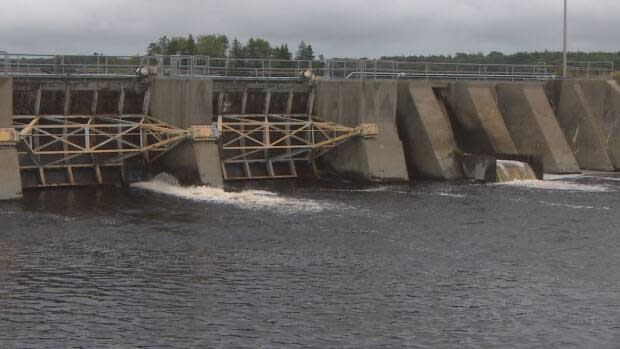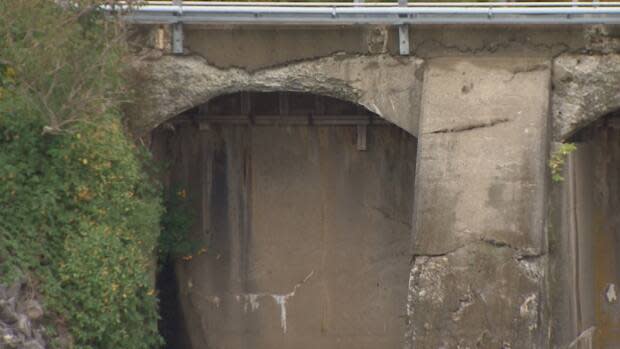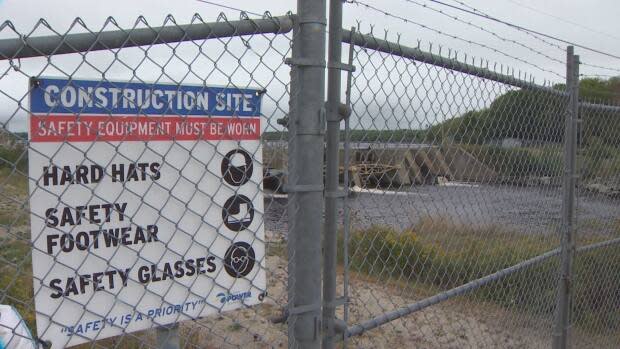NSP wants ratepayers to pick up $18M in extra spending on ill-fated Tusket dam

The cost of fixing the Nova Scotia Power hydro dam in Tusket, Yarmouth County, is now $18 million over budget — double the original forecast.
The utility has applied to regulators to charge Nova Scotia ratepayers $36.8 million for the ill-fated refurbishment, which is already two years behind schedule and now has an expected completion date of 2023.
When NSP filed the project with regulators in 2017 it predicted rebuilding the 2.7-megawatt dam would be completed in 2019.
The "authorization to overspend" filed this month includes $18.6 million above what was approved by the Nova Scotia Utility and Review Board in early 2019.
"Since the NSUARB's approval, the scope and costs of the Project have increased significantly due to at least two instances of water infiltration which necessitated changes to the construction plan, and led to increased Project costs," Nova Scotia Power said in its application.
If approved, the amount will be spread out over time so rates will not be directly impacted.

The bulk of the overspending — $8.9 million — relates to delays, consulting and additional construction costs to deal with unexpected water infiltration from the Tusket canal and fissures in the bedrock under the 93-year-old dam.
The inability to de-water the construction zone forced NSP to seek permission to temporarily lower the Lake Vaughan reservoir. Securing the required federal and provincial environmental permits added $2 million to the cost.
This week work began to lower Lake Vaughan and two connected lakes, Gavels and Kings.
NSP said engagement with the Mi'kmaq cost another $1.4 million "to understand and meaningfully address concerns associated with the protection of pre-contact First Nations archaeological sites and other environmental issues associated with the lowering of the Lake Vaughan Reservoir to pre-inundation levels."

NSP spokesperson Jaqueline Foster said in a statement to CBC News it is expected to take two construction seasons to complete the work.
The lakes will be lowered to their natural level and stay lowered until mid-February 2022. A second lowering of the Lake Vaughan reservoir and the two connected lakes is anticipated from mid-July 2022 to mid-February 2023.
So far, NSP has spent $13 million on the Tusket dam refurbishment. It estimates completing the job will cost another $20 million.
But it is asking regulators for $3.2 million as a contingency, a whopping 16 percent of forecast costs. The original application assumed a five per cent contingency.
NSP cites the potential for additional permitting conditions, weather delays, the discovery of more Mi'kmaw archeological artifacts and inflation.
"Until the Lake Vaughan Reservoir is lowered to its pre-inundation levels and the construction zone can be de-watered the Project continues to have an elevated level of uncertainty and risk," NSP told regulators.
Cheaper than shutting it down, NSP says
The utility argues refurbishing and replacing structures to comply with Canadian Dam Association standards is a better option for ratepayers than a partial decommissioning, which it estimates at $92 million.
"NS Power has responded prudently to changing circumstances with respect to this project, the extent of which could not have been anticipated at the time the Project was approved. Although the costs have increased significantly, the Project remains in the best interest of customers, as it is the lowest-cost alternative," the company said in its application.
MORE TOP STORIES

